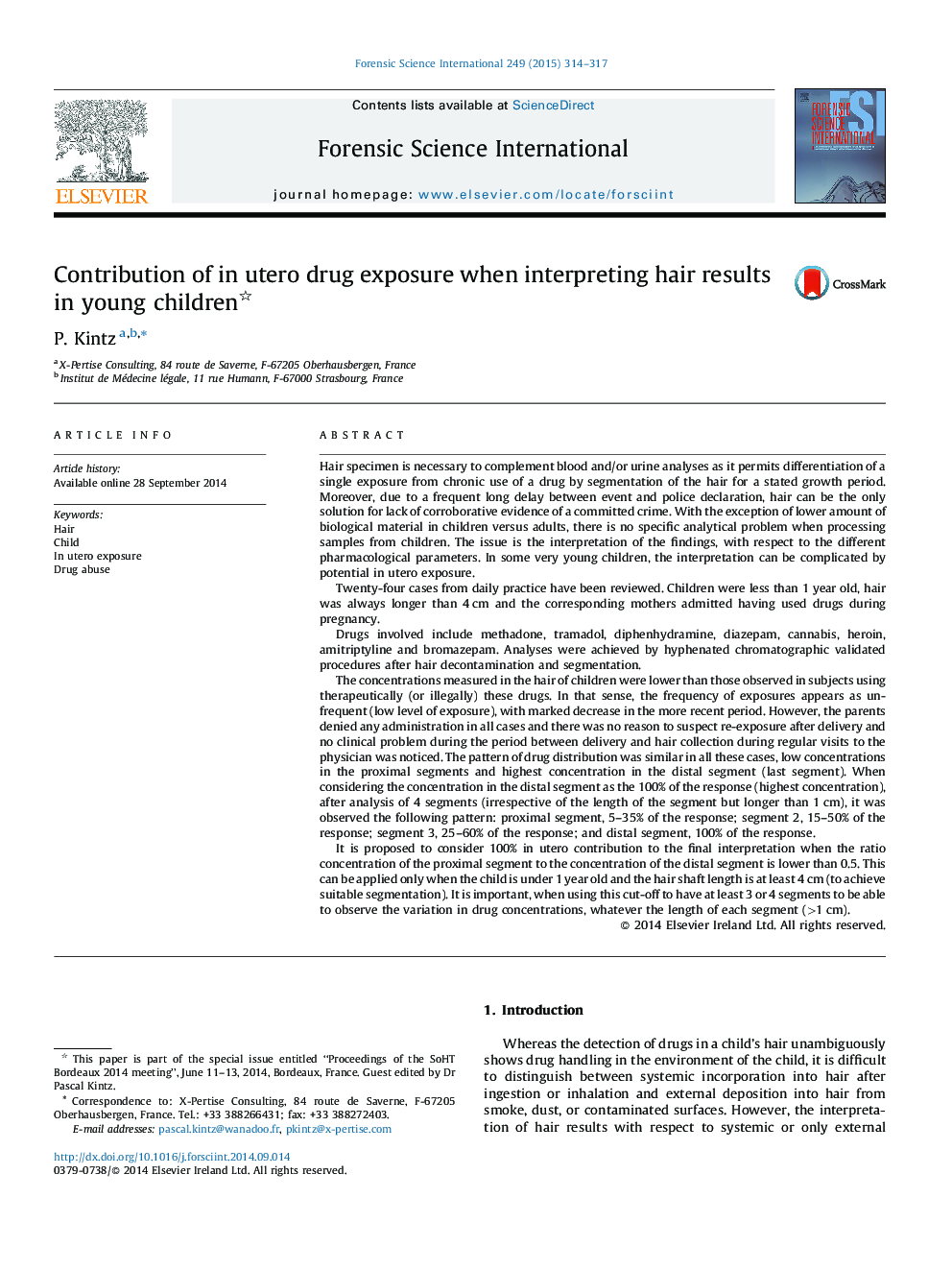| کد مقاله | کد نشریه | سال انتشار | مقاله انگلیسی | نسخه تمام متن |
|---|---|---|---|---|
| 95402 | 160429 | 2015 | 4 صفحه PDF | دانلود رایگان |
• Differences between young children and adults in hair testing for drugs.
• Discrimination between in utero drug exposure and administration post-delivery.
• Implementation of a 0.5 cut-off.
Hair specimen is necessary to complement blood and/or urine analyses as it permits differentiation of a single exposure from chronic use of a drug by segmentation of the hair for a stated growth period. Moreover, due to a frequent long delay between event and police declaration, hair can be the only solution for lack of corroborative evidence of a committed crime. With the exception of lower amount of biological material in children versus adults, there is no specific analytical problem when processing samples from children. The issue is the interpretation of the findings, with respect to the different pharmacological parameters. In some very young children, the interpretation can be complicated by potential in utero exposure.Twenty-four cases from daily practice have been reviewed. Children were less than 1 year old, hair was always longer than 4 cm and the corresponding mothers admitted having used drugs during pregnancy.Drugs involved include methadone, tramadol, diphenhydramine, diazepam, cannabis, heroin, amitriptyline and bromazepam. Analyses were achieved by hyphenated chromatographic validated procedures after hair decontamination and segmentation.The concentrations measured in the hair of children were lower than those observed in subjects using therapeutically (or illegally) these drugs. In that sense, the frequency of exposures appears as un-frequent (low level of exposure), with marked decrease in the more recent period. However, the parents denied any administration in all cases and there was no reason to suspect re-exposure after delivery and no clinical problem during the period between delivery and hair collection during regular visits to the physician was noticed. The pattern of drug distribution was similar in all these cases, low concentrations in the proximal segments and highest concentration in the distal segment (last segment). When considering the concentration in the distal segment as the 100% of the response (highest concentration), after analysis of 4 segments (irrespective of the length of the segment but longer than 1 cm), it was observed the following pattern: proximal segment, 5–35% of the response; segment 2, 15–50% of the response; segment 3, 25–60% of the response; and distal segment, 100% of the response.It is proposed to consider 100% in utero contribution to the final interpretation when the ratio concentration of the proximal segment to the concentration of the distal segment is lower than 0.5. This can be applied only when the child is under 1 year old and the hair shaft length is at least 4 cm (to achieve suitable segmentation). It is important, when using this cut-off to have at least 3 or 4 segments to be able to observe the variation in drug concentrations, whatever the length of each segment (>1 cm).
Journal: Forensic Science International - Volume 249, April 2015, Pages 314–317
